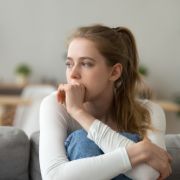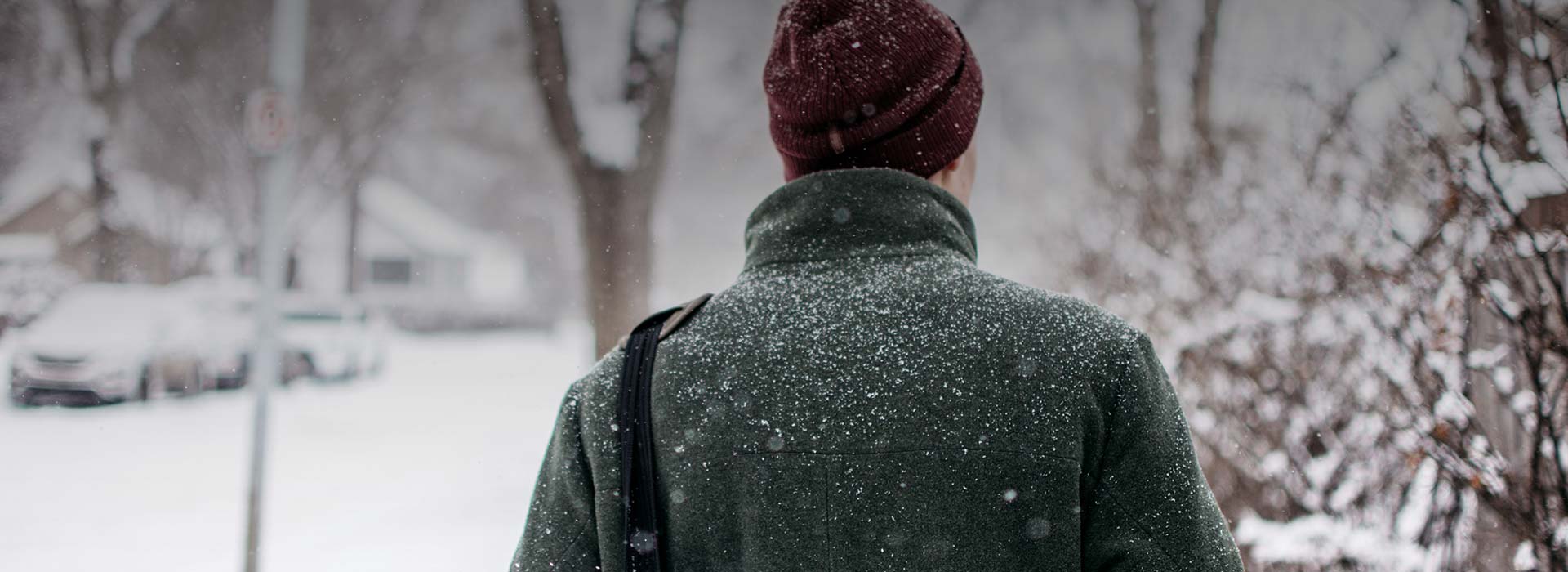What Is Anxiety?
What Is Anxiety?
Anxiety is both a mental and physical state of negative expectation. Mentally it is characterized by increased arousal and apprehension tortured into distressing worry, and physically by unpleasant activation of multiple body systems—all to facilitate response to an unknown danger, whether real or imagined.
The cognitive feelings of dread in anticipation of some bad outcome and physical sensations such as jitteriness and a racing heart are designed for discomfort. Anxiety is meant to capture attention and stimulate you to make necessary changes to protect what you care about. Occasional bouts of anxiety are natural and can even be productive. Anxiety can be considered the price we humans pay for having the ability to imagine the future.
When anxiety becomes a disorder
But persistent, pervasive, or outsize anxiety can disrupt daily life, whether at school, work, or with friends—the mark of an anxiety disorder. Nearly one-third of adults in the U.S. will grapple with out-of-control anxiety at some point in their life.
Anxiety is often accompanied by depression, and the two share many symptoms and involve many of the same brain pathways. Biology can contribute to vulnerability to anxiety, as can childhood experiences such as early trauma and parenting practices such as overprotection.
It is neither possible nor desirable to eliminate anxiety entirely, as it plays a crucial role in keeping us alert and alive. Treatment is geared to keeping anxiety at manageable levels. Anxiety can be treated successfully using therapy, medication, or both. Lifestyle measures, such as regular exercise and deep breathing, are also extremely important in controlling anxiety.
For more on causes, symptoms, and treatments of anxiety disorders, see our Diagnosis Dictionary.
Why Anxiety Is On the Rise

Anxiety is now the leading mental health problem around the world, and the incidence of anxiety is still rising, especially among youth. Increasing numbers of children and adolescents are being diagnosed with the disorder.
One often-cited reason for the general rise in anxiety is the burden of uncertainty in almost every domain of modern life, in response to an array of economic and cultural shifts. Uncertainty doesn’t cause anxiety, but it provides breeding grounds for it.
Two important factors contributing to anxiety among the young are parenting practices that overprotect children and the rise of social media. Technology provides new opportunities for connecting people, but it also leads to new experiences of negative social comparison and new pathways for social exclusion.
For more see Children and Anxiety
How to Recognise the Signs of Anxiety

Anxiety declares itself not just with endless loops of worry in the mind but with heart-pounding discomfort in the body, from general jumpiness and trembling to ring in the ears and shortness of breath.
The body symptoms of anxiety can be highly misleading. Not only are they often misinterpreted as signs of a heart attack and impending doom—a cardinal feature of panic attacks—but they often lead to odysseys of medical misdiagnosis. Physical symptoms may be assumed to be the result of physical causes, and in a misdirected search for them, the true source of the problem can continue undiscovered and unaddressed.
For more see Signs of Anxiety
How to Treat Anxiety

Anxiety disorders can often be addressed successfully with psychotherapy, alone or in combination with medication, and with lifestyle shifts. Cognitive behavioural therapy (CBT), tailored to an individual’s specific anxieties, is one of the most effective options. Patients learn to challenge distorted thought patterns that create so much distress.
Exposure therapy, in which patients are safely and gradually exposed to their fears so they no longer avoid them, is an essential part of most behavioural treatments for anxiety. Medication is often used to help patients control symptoms enough to focus on talk therapy.
Lifestyle changes play an important role in the long-term management of anxiety. Exercising, deep breathing, and programs of meditation all target very specific facets of the disorder.
For more see Treatment of Anxiety
When Is Anxiety an Illness?
Occasional bouts of anxiety are entirely normal and one of the unavoidable costs of being—and staying—alive. However, sometimes worries get out of control.
They may arise for no discernible reason, or be disproportionate to the situation, or last beyond moves to solve any possible problem. Or the worry or physical symptoms prompt you to avoid situations that may trigger discomfort. Anxiety becomes a disorder when it consumes too much mental activity or interferes with activities and performance.
For more see Anxiety: Is It an Illness?
What Are the Types of Anxiety?
Anxiety displays itself in a few diagnostically distinct ways. Generalized Anxiety disorder, in which concerns reflect any of the major domains of life—work, love, money, health—is most common among older adults. Social Anxiety Disorder, more narrowly focused on fear of negative evaluation by others, is on the rise among younger adults.
Phobias generally target specific objects or experiences. Sometimes anxiety roars onto the scene in a sudden, intense burst and builds to a terrifying crescendo in minutes. Panic attacks can strike seemingly randomly, out of the blue, or they may occur with incapacitating frequency. Anxiety in all its forms is amenable to treatment.
For more see Types of Anxiety
What Causes Anxiety?
The real cause of anxiety is being human with the capacity to imagine a future. It finds fertile ground in uncertainty, and there is much uncertainty in the world these days.
Anxiety is unique in that it can be triggered by events in the real world—an upcoming doctor’s visit, relationship conflict, a rent increase—or it can be generated wholly internally, through thoughts of real or imagined threats (not knowing what to say when the boss calls on you in a meeting).
For more see The Causes of Anxiety
What Is the Best Therapy for Anxiety?
The first-line treatment for anxiety is some form of cognitive-behavioural therapy. Practical and present-oriented, therapy helps people recognize the cognitive distortion that anxiety forces on them, helps them confront their fears safely, and provides techniques for reversing reactivity.
Like all treatments, the goal is to restore calm. But it does much more. It helps people regain control over themselves when worry threatens to overtake them.
Therapy has the added value of taking place in the presence of a real human being. As social creatures, we have nervous systems exquisitely attuned to the influence of others. The presence of a helpful person constitutes a powerful signal of safety, directly and deeply countermanding the (mistaken) alarms of threat that define the disorder of anxiety.
For more see Therapy for Anxiety
Natural Approaches to Anxiety
Anxiety requires active treatment; otherwise, it constricts life and tends to become a chronic condition. But that doesn’t mean it requires a prescription or medical intervention. Some of the most effective ways to control anxiety involve lifestyle or behaviour changes.
Calming the mind through meditation is an Eastern technique finding favour in Western cultures. Regular activity such as running or walking helps release the muscle tension that creates so much distress. It also changes the brain. One of the most effective measures of all may be deep (also call diaphragmatic) breathing. It has a direct effect on the nervous system, inducing a state of calm and curbing feelings of threat.
For more see Natural Approaches to Anxiety
Anxiety declares itself not just with endless loops of worry in the mind but with heart-pounding discomfort in the body, from general jumpiness and trembling to ringing in the ears and shortness of breath.
The body symptoms of anxiety can be highly misleading.
What Is the Biology of Anxiety?
Regardless of how real or imagined the threat, you’re reacting to, anxiety is both a mental and physical state. It’s orchestrated by a cascade of hormones that affect almost every system of your body, from attention to energy metabolism.
Overwhelmed by negative feelings, your mind is activated to be on the lookout for danger. The increased physical arousal —all that jitteriness and muscle tension—is preparing your body to respond to a possible adverse situation. It’s essentially well-meaning, intended to keep you alive.
For more seeThe Biology of Anxiety
What Makes People Vulnerable to Anxiety?
Anybody can experience a bout of debilitating anxiety. But some people seem to be inclined to anxiety: Because of genes or temperament, possibly as a result of early experience, possibly through over-or under activity of some area of the brain, they interpret neutral situations as threatening or overreact to threatening situations.
Stress is a major contributor to anxiety, and the two conditions overlap in many ways. Stress can both set off anxiety and be a response to it.
For more see What Makes People Vulnerable to Anxiety?
Panic Attacks
Panic attacks are abrupt bursts of acute anxiety that can make you feel that you are about to die—but they are not life-threatening. The body sensations of anxiety become extremely intense—pounding heart, racing pulse, the feeling of difficulty getting enough air—and trigger even more anxiety, intensifying the panic.
Panic attacks can occur out of the blue, even during sleep, and the feeling of loss of control magnifies the terror. As dire and overwhelming as such attacks feel, they nevertheless can be controlled—even while they’re happening.
For more see Panic Attacks
Children and Anxiety
As many as one in eight children may experience significant anxiety. Their first worries are about being separated from their parents. But they worry about many things, from fires and disasters they can’t control to arguments between their parents might mean divorce. They worry about the larger world, too, including terrorists and the effects of climate change.
Normal worries become problematic when they interfere with sleep, going to school or paying attention in school, or engaging in activities with others. One major factor influencing the prevalence of childhood anxiety—the rise of helicopter parenting.






